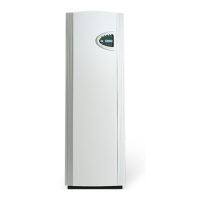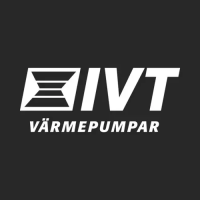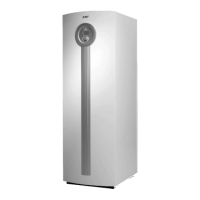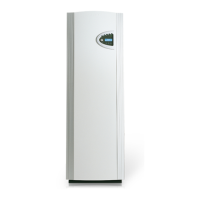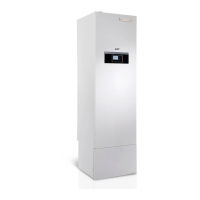Do you have a question about the IVT Greenline HT Plus E and is the answer not in the manual?
Emphasizes reading the manual and safety precautions for repairs.
Explains the operational principle and core components like evaporator and condenser.
Identifies and describes the main parts of the C model.
Identifies and describes the main parts of the E model.
Explains supplemental heat and priority for hot water.
Describes heating control using outdoor or room sensors.
Explains buttons, dial, and status lamps.
Using the menu dial and accessing customer level 1 functions.
Overview of menus for setting heating and hot water.
Menus for viewing various sensor readings.
Explains heat curves and how to adjust the slope.
Detailed steps to adjust the heat curve in cold conditions.
Adjusting the heat curve for warmer outdoor temperatures.
How to set the desired room temperature via sensor.
Temporarily increasing hot water availability.
Accessing and modifying heating and hot water parameters.
How to view various sensor readings.
Details on readings for radiator return, outdoor, hot water, fluid temps.
Details on compressor and room sensor temperature readings.
Overview of menus for timers, alarms, and other advanced settings.
Adjusting heat curves, room sensor effect, and holiday function.
Settings for remote operation and summer mode.
Adjusting and fine-tuning the mixing valve settings.
Configuring recurring increases in hot water temperature.
Programming heating based on time and day.
Setting DHW timer and viewing operating hours.
Configuring clock and accessing alarm logs.
Steps to reset the heat pump to default settings.
Routine checks, safety warnings, and opening the unit.
Procedure for filling the expansion tank.
Steps to clean filters on hot and cold sides.
Interpreting the status lamp for the anode.
Acknowledging alarms and troubleshooting fuse/breaker faults.
Identification of fuses and reset buttons.
Lists categories of potential alarms.
Actions for MB1 (compressor) and MB2 (HTF pump) alarms.
Steps for high compressor temperature issues.
Actions for LP alarms like air, low flow, or ice.
Actions for HP alarms related to flow or filters.
Actions for EK alarms like tripped breaker or overheat.
Actions for power failure or incorrect phase sequence.
Actions for low flow or clogged filters.
Actions for high return temp issues.
Actions for max HTF out temp issues.
Actions for faulty sensors or connections.
Actions for low HTF temp, flow, or clogged filters.
Introduction to the installer section of the manual.
Key requirements and safety notes before installation.
A step-by-step guide for the installation process.
Lists all parts delivered with the heat pump.
Lists available optional accessories.
Physical dimensions and connection points for model C.
Physical dimensions and connection points for model E.
Guidelines for safe handling and operating temperatures.
Correct installation of particle filters.
Maximum lengths and minimum bending diameter.
Diagrams for running hose underground and connecting it.
Diagrams for circuits and expansion vessel installation.
Instructions for reconfiguring pipes for side installation.
Detailed steps for switching pipes from top to right-side.
Detailed steps for switching pipes from top to left-side.
Setting up an intermediate heat exchanger for groundwater.
Wiring the groundwater pump to the heat pump.
Minimum flow rates and pressure drops for direct connection.
Principle and sensor connections for model C.
Principle and sensor connections for model E.
When and how to use a bypass for flow guarantees.
Steps for filling and venting the heating system.
Steps to fill the collector hose with heat transfer fluid.
Tables for mixing anti-freeze with water by volume and weight.
Final steps for filling, pressurizing, and insulating.
Safety switches, breakers, and sensor placement.
Wiring for power, mixing valves, and pumps.
Connecting various sensors and alarm inputs.
Wiring general alarm output and external inputs.
How to enter and navigate installer-specific menus.
Procedures for manual test runs and initial heat pump start-up.
Adjusting temperature, hot water, and hysteresis settings.
Configuring additional heat activation and external controls.
Registering external sensors with the control unit.
Checking and adjusting timers for DHW, additional heat, and ramp times.
Running the unit using only additional heat.
Verifying pressure, flow, and temperatures after initial operation.
Default settings and sensor resistance data.
Technical data for 3-phase Greenline HT Plus models.
Technical data for 1-phase Greenline HT Plus models.
